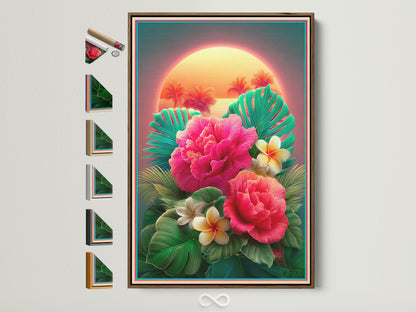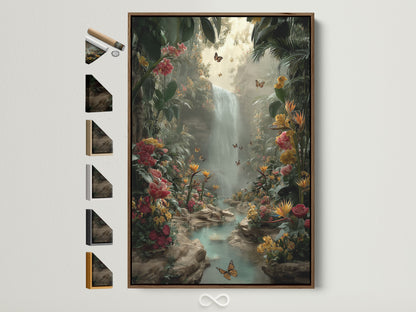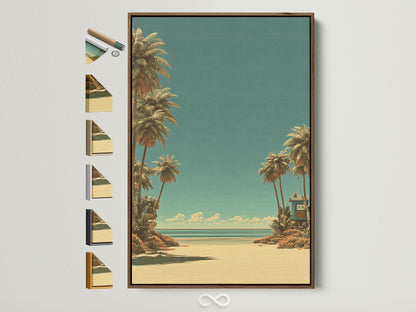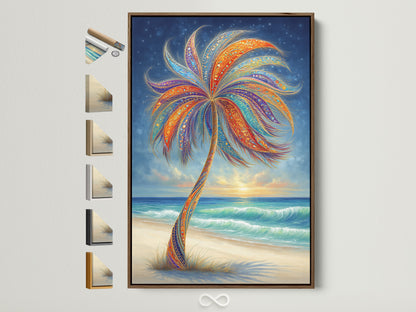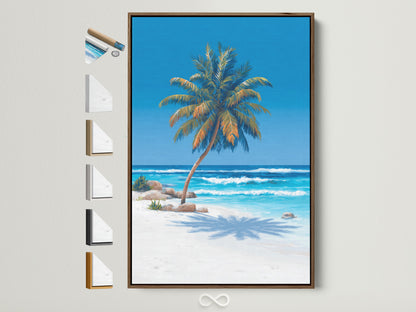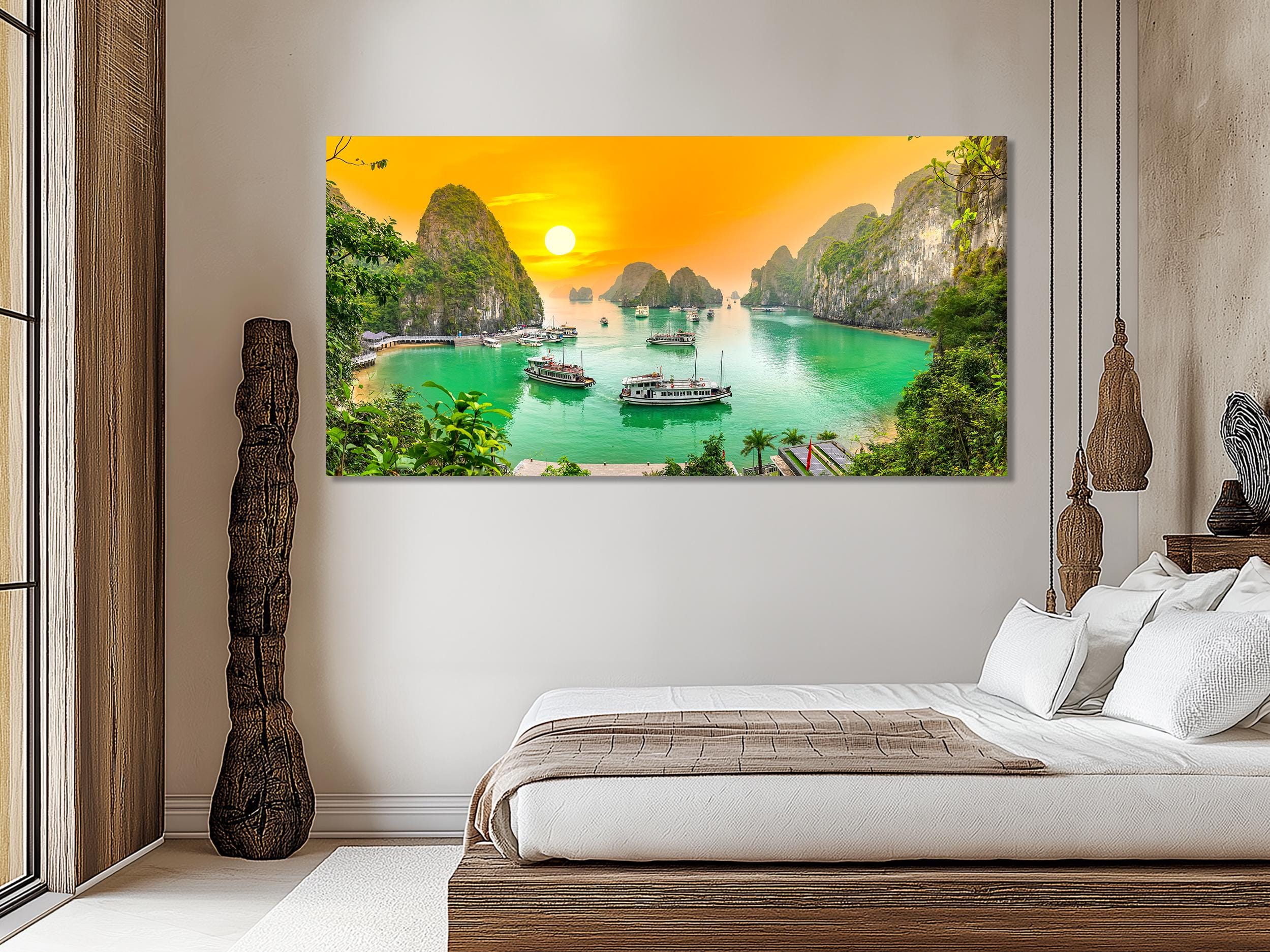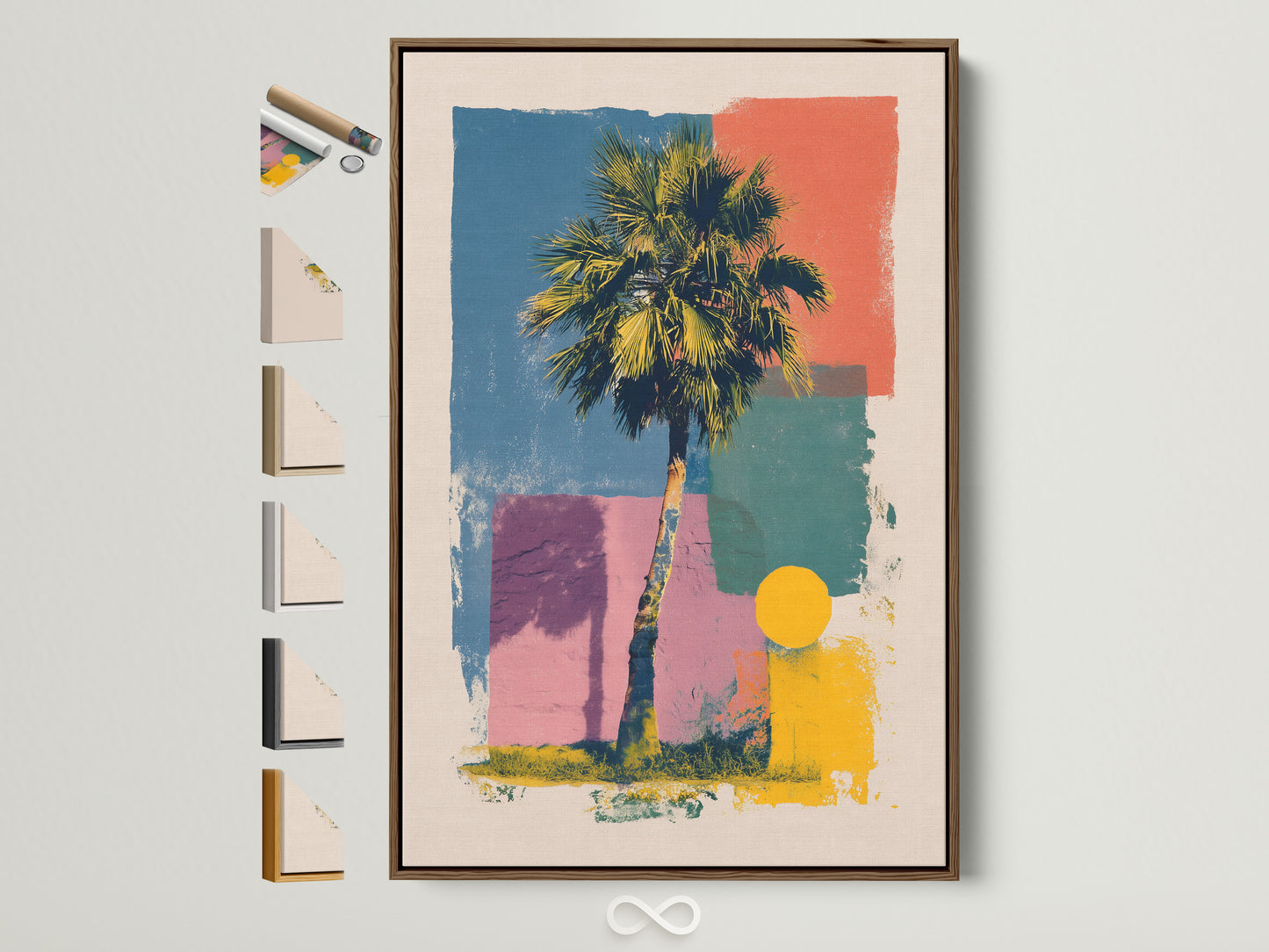Tropical Modernism at Home: A Breezy Room‑by‑Room Playbook
Tropical Modernism looks effortless because it works with climate, not against it. Think deep shade, generous airflow, honest materials—and rooms that open to gardens without shouting about it. Here’s how to borrow the philosophy at home, with practical tips, iconic references, and shoppable art to bring the look together.
Why this style resonates now
Across the tropics, good buildings start with comfort: shade to calm the sun and openings to invite a breeze. That’s the heart of Tropical Modernism—architecture and interiors tuned to hot, humid weather using common‑sense moves that also happen to be beautiful. You’ll see airy verandahs, slatted timber screens, limewashed walls, rattan and teak, terrazzo underfoot, and lighting that glows rather than glares. If you love calm spaces with indoor–outdoor flow, you’re in the right place. For more style playbooks, browse our Design archive.
What is Tropical Modernism?
Tropical Modernism is a mid‑century design approach developed for hot, humid climates. It uses passive strategies—shading, cross ventilation, and local materials—to create cool, dignified spaces without relying on heavy mechanical cooling. The idea spread through West Africa in the 1940s and, after independence movements, became a symbol of progressive nation‑building in places like Ghana and India. Later, Sri Lankan architect Geoffrey Bawa evolved a lush, indoor–outdoor variant that fused modern lines with gardens and courtyards.
Origins & icons


Want to see how a private house becomes a living garden? World of Interiors’ tour of Bawa’s Number 11 in Colombo is a great primer.
The climate‑smart toolkit
Quick take: Reduce solar gain, move air, specify breathable finishes. The following principles are the backbone of tropical comfort and the DNA of the look.
Shade, screens & brise‑soleil
Exterior screens (brise‑soleil) and slatted timber panels temper direct sun while letting breezes through. They also create elegant light patterns—daytime drama without heat. Fixed slats facing the sun’s path, operable louvers for fine‑tuning, and lattice block (breeze blocks) all belong to the toolkit.

Deep overhangs & verandahs
Roof overhangs keep walls cool and open walkways dry in monsoon weather. A verandah doubles as an outdoor room—part porch, part living space—so you can live outside even during a warm rain.
Cross ventilation & the stack effect
- Place operable windows or doors on opposite walls to pull air across a room.
- Add high‑level vents or clerestory windows so hot air can rise and escape.
- Use ceiling fans to mix air quietly; they extend comfort dramatically at low energy.
- Choose jalousie windows or slatted panels where privacy and airflow must coexist.
Materials that breathe
Limewash or mineral paints allow walls to dry out between showers. Rattan and cane webbing don’t mind humidity; teak resists moisture and ages gracefully. Terrazzo and polished concrete feel cool underfoot and shrug off sand and bare feet. Natural fibers—linen, cotton, sisal—finish the palette.
If you want the walls to feel unfussy and matte, see our guide to limewash & mineral paint.
Room‑by‑room playbook
Entry & verandah
Start with shade. A small awning or pergola extends the threshold; a bench with storage corrals flip‑flops and sun hats. Plant something architectural: a palm in a terracotta pot or a clump of broad‑leafed philodendron. Flooring should be honest and wipeable—terrazzo, sealed concrete, or stable timber decking.
Living room
Keep the plan loose and low. Float a sofa and two easy chairs on a natural‑fiber rug; use nested tables in teak or ebonized wood. Place a ceiling fan at least 8–9 feet above the floor and 10–12 inches below the ceiling for best circulation. Layer screens or gauzy curtains so you can tune glare without blocking air.
Five art picks to set the mood
Tip: group coastal art on one wall and keep frames consistent (teak/oak) for a gallery that feels curated, not themed.
Kitchen & dining
Think airflow and wipeable surfaces. Align windows or doors to draw a cross‑breeze through the cook zone; consider slatted pantry doors to avoid stale heat. Terrazzo slabs or honed stone tops pair beautifully with cane or rattan chairs. Over the table, hang a bamboo or cane shade (low glare, warm glow), and add a dimmer.
Bedroom
Light and breathable. Layer linen sheets, a single cotton blanket, and a light bedspread in neutral sand or stone. A teak or rattan headboard anchors the room; pendant task lights free the bedside. Keep a fan overhead and a second, smaller one across the room to help air loop through.
Bath
Limewash, tadelakt, or micro‑cement gives a soft, hand‑touched finish. Add a teak shower mat and a plant that loves humidity (ferns, pothos, peace lily). Mirrors should be edge‑sealed; hardware in unlacquered brass or stainless will age gracefully in moisture.
Materials & finishes that love the tropics
- Limewash & mineral paint: vapor‑permeable, matte, forgiving.
- Rattan & cane webbing: breathable, light, and resilient.
- Teak & dense hardwoods: naturally moisture‑resistant.
- Terrazzo & polished concrete: cool underfoot; timeless.
- Louvered doors & jalousies: tune privacy without losing air.
If you like a more sculptural, textured vibe, our primer on Soft Brutalism at Home pairs beautifully with tropical palettes.
Lighting framework: dapple by day, glow by night
Daylight should be softened, not blocked. Slatted shades, trees, and overhangs filter glare; inside, gauzy curtains tame highlights. At night, layer warm 2700–3000K light: a pendant over the table, a floor lamp near seating, and small, shielded fixtures outside so the garden reads as a gentle backdrop.
Color & pattern—keep the base calm
Start with stone, sand, teak, and leaf greens. Build in small bursts—an ocean‑blue textile, a coral vase, or a single graphic gesture. Maximalists can go bolder with a mural or large‑scale motif; see our primer on Supergraphics at Home. Color‑blockers might prefer the crisp lines of Neo–De Stijl at Home to frame tropical art.
Case‑study lessons from Bawa
- Blur the threshold. Courtyards, verandahs, and pavilions stitch room to garden.
- Frame a long view. Align doors and windows to catch a breeze and capture a vista.
- Let materials patinate. Limewashed plaster, aged timber, and terra-cotta become more beautiful with time.
Ventilation 101 you can apply without rebuilding
- Open windows or doors on opposite sides for 10–15 minutes morning and evening to flush heat.
- Place fans to push air across seating, not directly at faces; set fan blades to push air downward in hot months.
- Swap a solid door for a louvered one on laundry or bath to reduce trapped humidity.
- Declutter window sills; even small obstructions reduce airflow.
Shop the look
Ready to anchor the mood? Browse our Nautical & Coastal Wall Art—sea‑washed palettes, palms, and breezy horizons that sit perfectly with limewash, teak, and rattan.
More tropical art to layer in
FAQs
- What’s the difference between Tropical Modernism and “coastal” style?
- Coastal decor prioritizes beach motifs and light color palettes; Tropical Modernism is a climate‑first approach that uses shading, airflow, and honest materials. The result can look coastal, but the DNA is performance and simplicity.
- Can Tropical Modernism work in a non‑tropical climate?
- Yes. You’ll still benefit from deep shades, breathable finishes, and indoor–outdoor cues. Just tune openings and insulation to your weather and use fans as seasonal assists.
- Which materials hold up best in humidity?
- Teak, dense hardwoods, rattan, cane webbing, terrazzo, polished concrete, and mineral‑based paints are all humidity‑tolerant. Ventilation and regular dusting help everything last longer.
- How do I avoid a theme‑park look?
- Keep the base quiet (sand, stone, teak) and add only one or two strong tropical notes—an art piece, a textile, or a planted corner. Avoid too many props; let air and shade do some of the decorating.
References & image credits
- Victoria & Albert Museum: “Tropical Modernism: Architecture and Independence” (exhibition overview).
- V&A: “What is Tropical Modernism?”
- ArchDaily: “7 Bioclimatic Façade Strategies for Tropical Architecture.”
- World of Interiors: “Geoffrey Bawa Number 11 House.”
- Autodesk Forma Blog: “Passive design strategies for tropical buildings.”
- ArchEyes: “The Kandalama Hotel — Geoffrey Bawa.”
- Architropics: “Passive strategies for thermal comfort in tropical homes.”
- Images: Wikimedia Commons — Labeet (CC BY‑SA 3.0) and Eco2004 (CC BY‑SA 4.0); Rosswi88 (public domain). Product images © Artoholica.

